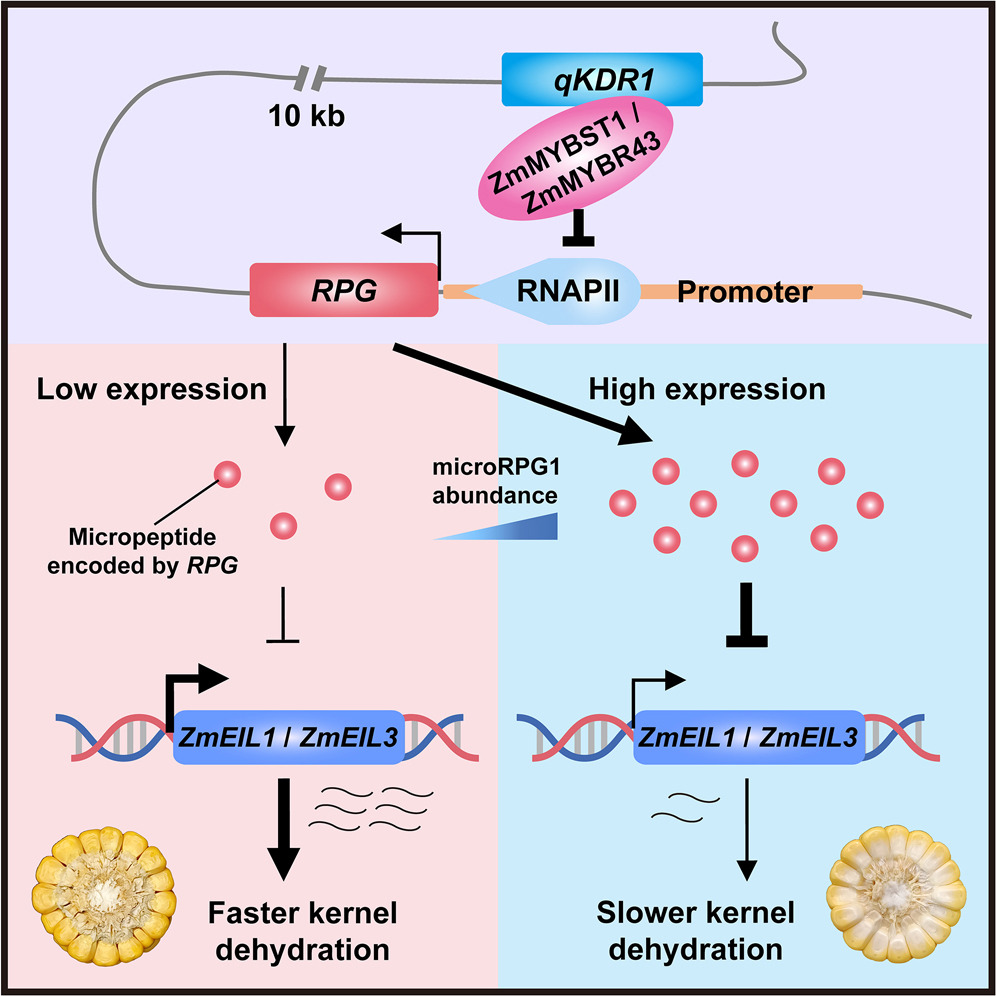
A novel micropeptide regulates kernel dehydration in maize through ethylene signaling
Plant Science Research WeeklyKernel dehydration rate (KDR) is a critical factor affecting mechanized maize harvesting and kernel quality. Despite its agricultural importance, the molecular mechanisms regulating KDR remain unclear. Previous studies have identified several QTLs controlling KDR, but their functional characterization…
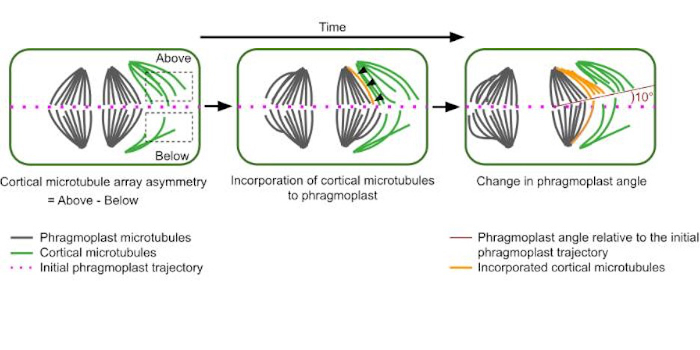
Parking the phragmoplast: division site positioning via cortical telophase microtubules
The Plant Cell: In a NutshellBellinger and Uyehara et al. characterize a population of microtubules that contribute to division site positioning.
By Aimee N. Uyehara1 and Carolyn G. Rasmussen1
1Department of Botany and Plant Sciences, Center for Plant Cell Biology, Institute for Integrative Genome Biology, University of California,…
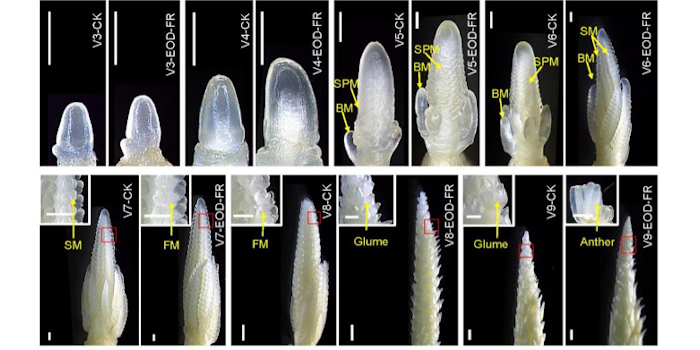
Casting light on maize inflorescence development under shade
The Plant Cell: In a NutshellKong, Li, Xue, Wei, et al. investigate the regulatory modules of tassel and ear development in response to simulated shade in Zea mays.
By Dexin Kong1, Qing Liu1 and Haiyang Wang1,2
1State Key Laboratory for Conservation and Utilization of Subtropical Agro-Bioresources, South China Agricultural…
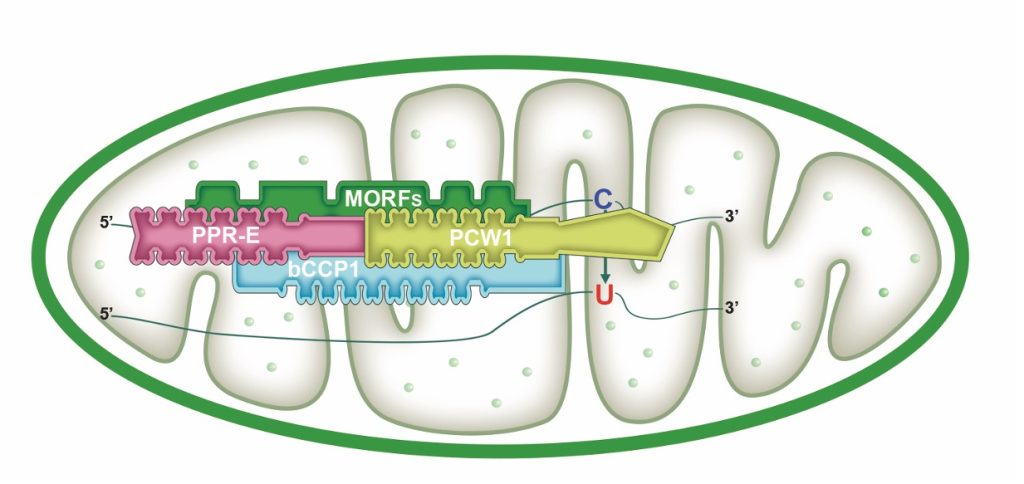
The pentatricopeptide repeat PPR-E proteins mediate RNA C-to-U editing by recruiting a cytidine deaminase
The Plant Cell: In a NutshellWang et al. reveal how the PPR-E proteins function in RNA editing in maize mitochondria.
Yong Wang and Bao-Cai Tan
Key Laboratory of Plant Development and Environmental Adaptation Biology, Ministry of Education, School of Life Sciences, Shandong University, Qingdao 266237, China
Background:…
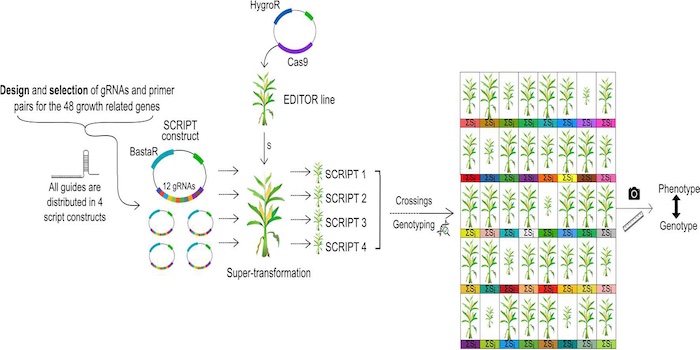
BREEDIT, a first step towards breeding by gene editing
The Plant Cell: In a NutshellLorenzo et al. develop a system that uses gene editing to target multiple members of redundant gene families.
Christian Damian Lorenzo(1,2), Kevin Debray(1,2) and Dirk Inzé(1,2)
1 Department of Plant Biotechnology and Bioinformatics, Ghent University, 9052 Gent, Belgium
2 Center for Plant…
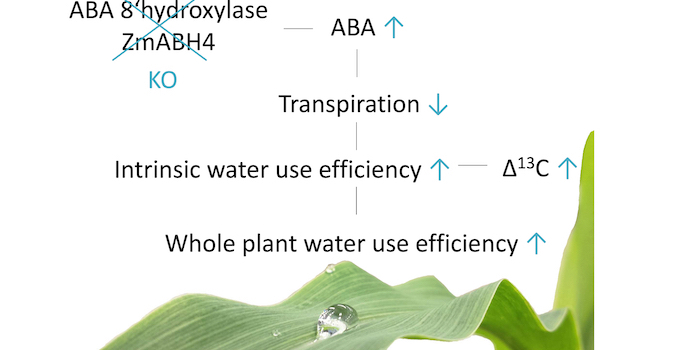
Improving water use efficiency in maize
The Plant Cell: In a NutshellBlankenagel et al. discover a major link between variation in water use efficiency and carbon isotope discrimination
By Sonja Blankenagel, Stella Eggels, and Viktoriya Avramova
Plant Breeding, TUM School of Life Sciences, Technical University of Munich
Background: Growing crops with high…
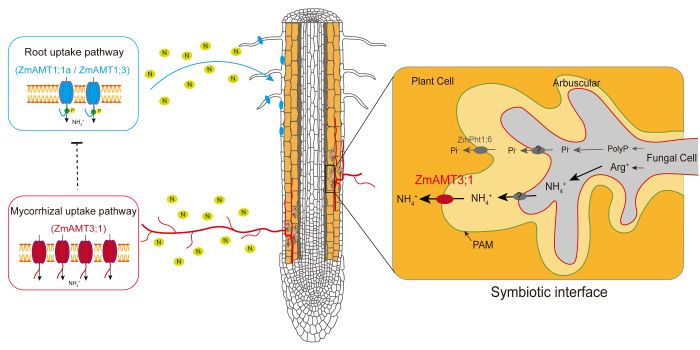
Unraveling Ammonium Transporter-Mediated Nitrogen Transfer in Arbuscular Mycorrhizal Symbiosis
The Plant Cell: In a NutshellJing Hui et al. identified ZmAMT3;1 as a mycorrhiza-specific ammonium transporter that transfers ammonium from fungi to plants across the plant–fungus interface and enhances nitrogen acquisition in maize. Plant Cell https://doi.org/10.1093/plcell/koac225
By Jing Hui and Lixing Yuan, China Agricultural…
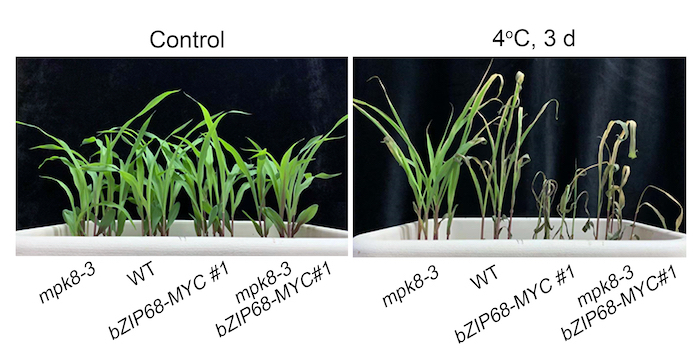
Unraveling cold tolerance in maize
The Plant Cell: In a NutshellLi et al. discover a cold-tolerance allele that was not selected during maize domestication.
Background: Cold stress is an important environmental factor that limits plant growth, development, and geographical distribution. Maize originated in Mexico and is sensitive to low temperatures. Cold stress…
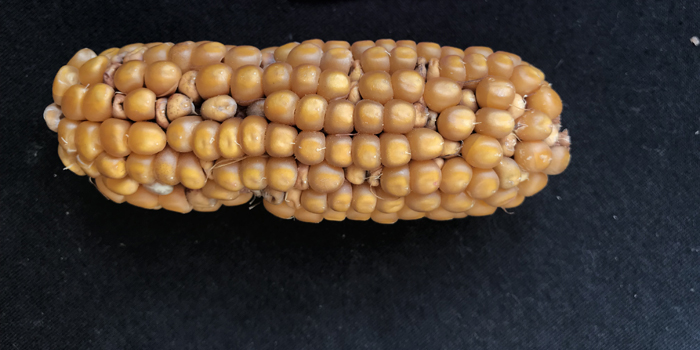
18S rRNA processing factors in maize
The Plant Cell: In a NutshellWang et al. find an RNA 3’-terminal phosphate cyclase-like protein that participates in processing the 18S ribosomal RNA in maize. https://doi.org/10.1093/plcell/koac052
by Tao Wang and Jun Yang
The National Engineering Laboratory of Crop Resistance Breeding, School of Life Sciences, Anhui Agricultural…

